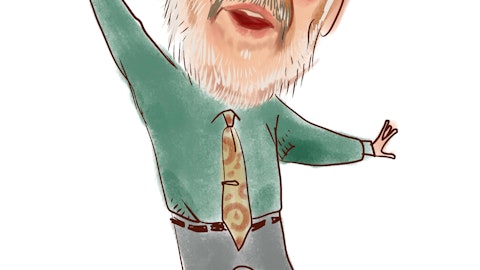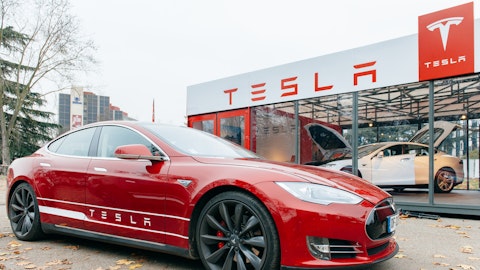Insulin therapy alone accounts for about 55% of the global diabetes treatment market. Within that market, there are five main types of insulin, each with its own advantages and disadvantages. There is fast-acting, which begins to work within 5 to 15 minutes and can control glucose levels for 3 to 4 hours. What makes it fast-acting is that the insulin molecules do not bind together into groups of six molecules called hexamers, and are therefore immediately active. Then there is short-acting, regular insulin that works within 30 minutes for up to 8 hours. Intermediate-acting begins working after 1 hour for 16 to 24 hours.
Long-acting insulin like Lantus from Sanofi SA (ADR) (NYSE:SNY) works within 1 hour and lasts for 24 hours. Finally, ultra-long acting insulin like Tresiba from Novo Nordisk A/S (ADR) (NYSE:NVO) lasts for more than 24 hours. The difference between these insulin forms are usually due to a slightly different amino acid orders, or else an extra molecular chain added that links the molecules together, preventing them from dissolving into their active form too quickly.
The world’s four bestselling diabetes products are Sanofi’s Lantus, Januvia from Merck and Co. Inc. (NYSE:MRK), NovoRapid/NovoMix from Novo Nordisk A/S (NYSE:NVO), and Humalog/Humulin from Eli Lilly and Co. (NYSE:LLY). What follows is a review of these four and a fifth candidate in development form Oramed Pharmaceuticals Inc. (NASDAQ:ORMP) that has a shot at disrupting these markets.
Lantus
Insulin glargine, marketed by Sanofi as Lantus, is slightly different from normal insulin because it substitutes the amino acid glycine for asparagine at position 21 on the molecule, and adds two more arginines to one of the end chains. These changes make the molecule less soluble in the blood, so it dissolves more slowly. Sanofi supplies the drug to 3.5 million patients around the world.
Sanofi’s patent on Lantus expired in 2015. Normally, a patent expiry on a biologic like Lantus would not be such a threat because biologics, since they derive from living cells, cannot be simply copied into a generic form. The molecules are too complicated. A competitor must figure out a way to manufacture a similar biologic, and this is quite a feat. Until March of this year, there were zero biosimilar products on the market at all for any disease. They are just now starting to appear.
Eli Lilly and Co. (NYSE:LLY) for example markets its own insulin called Humalog, whose patent expired in 2013 but sales have kept growing in spite of this. Sanofi has not had such luck because Lantus’s patent expired at the same time that Eli Lilly figured out how to manufacture something similar. While Eli Lilly’s insulin glargine called Basaglar is not technically a biosimilar by FDA standards, it still shows that biotechnology companies are finally figuring out how to compete with popular biologics, and Sanofi does see this as a threat, though it is unclear how much of a threat it is. We won’t know until several years out as we see Basaglar sales compared to Lantus sales going forward.
2015 sales of Lantus® were down 10.8% at constant exchange rates. In the U.S., sales decreased 20.5% to €4,023 million because of higher discounts, though growth is still coming from China. A new combination therapy called iLixiLan was just recently approved by the FDA, which combines a GLP-1 component with insulin glargine. This may help slow the sales decline for Lantus but will not stop it. Biosimilars could also continue hacking away at Lantus sales. The only question is how quickly.
It is important to review the data on which drugs like Lantus were approved in order to get a better idea of how new diabetes drugs can successfully get to market. Lantus was trialed for both type 1 and type 2 diabetes. Here we’ll go into its type 2 trials.
Lantus was approved for type 2 based on four separate trials. The first enrolled 570 subjects for 52 weeks. Lantus injected once a day was found to be as effective as shorter acting NPH insulin. The change in HbA1C, the gold standard measurement for average blood glucose levels over 8 to 12 weeks, changed by 0.46 from baseline vs NPH at 0.38. HbA1c measures how much hemoglobin has had glucose attached to it, and since blood cells live for 8 to 12 weeks, a measurement of HbA1c shows average blood sugar levels over this timeframe.
The second study enrolled 518 patients testing Lantus at bedtime vs NPH insulin once or twice a day for 28 weeks. HbA1c change from baseline for Lantus was 0.41 vs NPH of 0.59. The third study enrolled 697 patients who failed oral antidiabetic therapies. Lantus was given once a day either before breakfast or at bedtime and was again shown to be as effective at lowering HbA1c levels as NPH insulin.
These are the kinds of numbers that most insulin products need to emulate in order to reach approval. Several Phase III trials each with more than 500 patients, demonstrating lower HbA1c for a sustained period of time and a good safety profile.
Over the course of its history since 2000, Lantus has sold about $54B globally, and though those numbers will keep growing, we are already past Peak Lantus, and Sanofi is going to have to find a new flagship to sustain growth.
Follow Sanofi Aventis (NYSE:SNY)
Follow Sanofi Aventis (NYSE:SNY)



